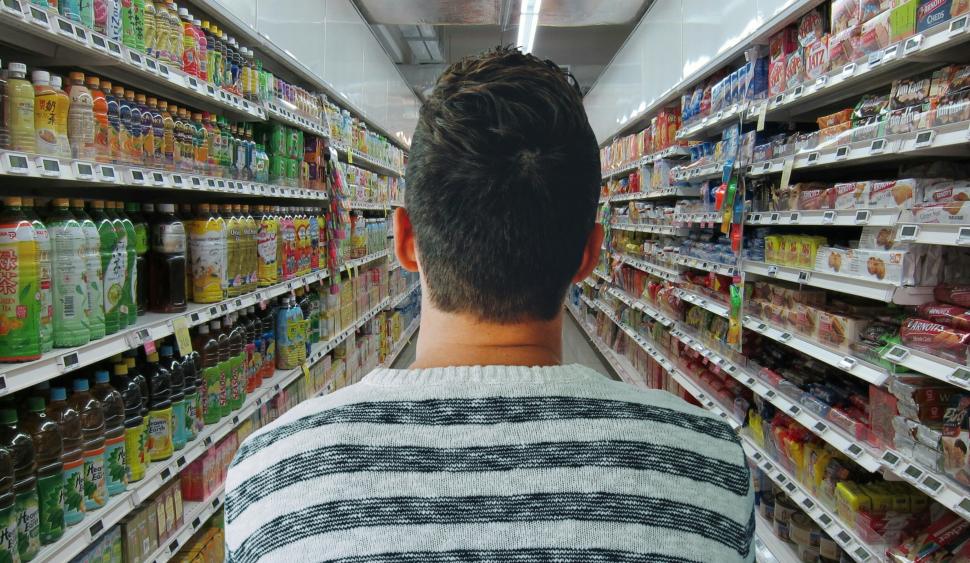
How to Eat During a Pandemic
Share
We’re living in unprecedented times. Everything from our grocery shopping to our weekend restaurant guilty pleasures is being affected as society adjusts to this “new normal.” If you want to keep you and your loved ones happy, healthy and safe, here’s what to know about navigating our food and shopping habits in an age of a pandemic.
 During times of social isolation, stress, worry and anxiety, our brain releases hormones that influence us to crave "comfort" foods, such as foods that are high in sugar or high in fat.
Hippocrates, the father of modern medicine, famously said: “Let food be thy medicine.” Nutrition and self-care are two of the most foundational elements of protecting yourself from the pandemic and all other illnesses and disease. Supporting our body, and strengthening our immune system through whole foods and healthy supplements, are key.
And thus, it's important to understand how living in a pandemic affects our food habits, our "guilty pleasures," our snacking and our diet in general.
According to one of many studies published recently, researchers made a clear connection between stress levels and obesity. During times of social isolation, stress, worry and anxiety, our brain releases hormones that influence us to crave "comfort" foods, such as foods that are high in sugar or high in fat.
This, of course, contributes to weight gain and obesity risks. Plus, these foods do no favors to your health and your immune system. For instance, excess sugar in your diet hampers your immune system’s response to COVID-19 and other diseases.
Before we dive into the practicalities of nutrition, grocery shopping and diet during pandemics and social lockdowns, it’s important that we spend a moment in self-awareness. Are you stressed? Are you worried? Are you fearful? If those emotions are prominent in your life right now, invest in self-care, therapy and other modes of self-growth to tackle these underlying emotions.
For instance, exercise, meditation, yoga and charitable work have all been clinically shown to improve our sense of happiness and well-being. Deal with these underlying energies in your body before trying to put a bandage on the surface issues.
During times of social isolation, stress, worry and anxiety, our brain releases hormones that influence us to crave "comfort" foods, such as foods that are high in sugar or high in fat.
Hippocrates, the father of modern medicine, famously said: “Let food be thy medicine.” Nutrition and self-care are two of the most foundational elements of protecting yourself from the pandemic and all other illnesses and disease. Supporting our body, and strengthening our immune system through whole foods and healthy supplements, are key.
And thus, it's important to understand how living in a pandemic affects our food habits, our "guilty pleasures," our snacking and our diet in general.
According to one of many studies published recently, researchers made a clear connection between stress levels and obesity. During times of social isolation, stress, worry and anxiety, our brain releases hormones that influence us to crave "comfort" foods, such as foods that are high in sugar or high in fat.
This, of course, contributes to weight gain and obesity risks. Plus, these foods do no favors to your health and your immune system. For instance, excess sugar in your diet hampers your immune system’s response to COVID-19 and other diseases.
Before we dive into the practicalities of nutrition, grocery shopping and diet during pandemics and social lockdowns, it’s important that we spend a moment in self-awareness. Are you stressed? Are you worried? Are you fearful? If those emotions are prominent in your life right now, invest in self-care, therapy and other modes of self-growth to tackle these underlying emotions.
For instance, exercise, meditation, yoga and charitable work have all been clinically shown to improve our sense of happiness and well-being. Deal with these underlying energies in your body before trying to put a bandage on the surface issues.
 Before you go shopping, make a meal prep list (we offer many healthy meal recipe ideas) and take inventory of your pantry.
It's important that you minimize your exposure to big crowds during this time, and one of the most common places to congregate in society is in the grocery store.
Before you go shopping, make a meal prep list (we offer many healthy meal recipe ideas) and take inventory of your pantry. For the best results, consider these general healthy living principles:
Before you go shopping, make a meal prep list (we offer many healthy meal recipe ideas) and take inventory of your pantry.
It's important that you minimize your exposure to big crowds during this time, and one of the most common places to congregate in society is in the grocery store.
Before you go shopping, make a meal prep list (we offer many healthy meal recipe ideas) and take inventory of your pantry. For the best results, consider these general healthy living principles:
 There is little risk, according to the latest studies, that COVID-19 and similar diseases are transmitted by food.
Depending on where you live, food delivery and restaurants open for takeout may be an option.
The good news? There is little risk, according to the latest studies, that COVID-19 and similar diseases are transmitted by food. However, low risk is not the same as no risk. If you’re worried, consider these tips:
There is little risk, according to the latest studies, that COVID-19 and similar diseases are transmitted by food.
Depending on where you live, food delivery and restaurants open for takeout may be an option.
The good news? There is little risk, according to the latest studies, that COVID-19 and similar diseases are transmitted by food. However, low risk is not the same as no risk. If you’re worried, consider these tips:
 During times of widespread disease outbreaks, it’s important to eat a diet that supports your immune system:
During times of widespread disease outbreaks, it’s important to eat a diet that supports your immune system:
How the Pandemic Impacts Our Stress and Our Eating Habits
 During times of social isolation, stress, worry and anxiety, our brain releases hormones that influence us to crave "comfort" foods, such as foods that are high in sugar or high in fat.
During times of social isolation, stress, worry and anxiety, our brain releases hormones that influence us to crave "comfort" foods, such as foods that are high in sugar or high in fat.
Pandemic Safety and the Grocery Store
 Before you go shopping, make a meal prep list (we offer many healthy meal recipe ideas) and take inventory of your pantry.
Before you go shopping, make a meal prep list (we offer many healthy meal recipe ideas) and take inventory of your pantry.
- Think nutrition. Do you have a good stock of staples that form the basis of any health meal? Namely whole grains, fruits and vegetables, and lean protein.
- Think variety, especially if you have a big family or picky eaters. Consider different ethnic cooking styles or themes, such as meatless Mondays, taco Tuesdays, etc.
- Think flexibility. Do you have enough staples in your pantry that you can combine a few ingredients and come up with a meal?
- Think comfort. In times of stress, we crave comfort and that doesn’t have to mean fats and sugars. From the beautiful smell of fresh-baked bread, to the coziness of a warm cup of soup on a cold day, what are ways to create comfort for you and your family that’s healthy and delicious?
- Think convenience and storage. To minimize having to return to the store too often, stock up on frozen fruits and vegetables (they retain most if not all of their nutritional quality!) and canned items.
Pandemic Safety and Takeout
 There is little risk, according to the latest studies, that COVID-19 and similar diseases are transmitted by food.
There is little risk, according to the latest studies, that COVID-19 and similar diseases are transmitted by food.
- Ask the restaurant what their safe hygiene principles are.
- Choose contactless payment options, such as tapping your credit card, versus cash which passes through many hands and may be contaminated.
- If you’re worried about disease transmission via takeout restaurant containers, consider wiping down the outside with a safe, all-natural disinfectant (avoid bleach!), or transfer the food into your own personal storage containers before disposing/recycling the original takeout containers.
Pandemic Safety and Your Personal Kitchen
Whether you’re eating takeout or preparing your own meals, practice good hygiene at home to prevent disease and illnesses, whether that’s COVID-19 or the common flu:- Always wash your hands thoroughly before and after cooking or eating.
- Sanitize commonly touched surfaces, such as sinks, faucets, cupboard handles and door handles.
- Wash all fresh produce, even if it’s organic.
Pandemic Nutrition in General
 During times of widespread disease outbreaks, it’s important to eat a diet that supports your immune system:
During times of widespread disease outbreaks, it’s important to eat a diet that supports your immune system:
- Drink lots of water. Hydration is critical for immune system functioning.
- Eat the rainbow. As you meal prep, try to incorporate a few different colors into your meal. Whether it’s red bell peppers or orange carrots, colors are natural signals that the food you’re eating is high in antioxidants and vitamins and minerals that strengthen your immune system.
- Don’t forget fresh. While canned and prepared foods are great for long-term storage during times of social lockdowns, fresh (and frozen!) foods have enzymes and active properties your immune system needs.
- Take your supplements. And we’re not just talking about traditional supplements for immunity, like vitamin C. Thymic proteins can also help. They help your body to respond more effectively to disease, but your levels of thymic proteins go down as you age. A thymic protein supplement, like BioPro Plus 500, can help to close the gap.
